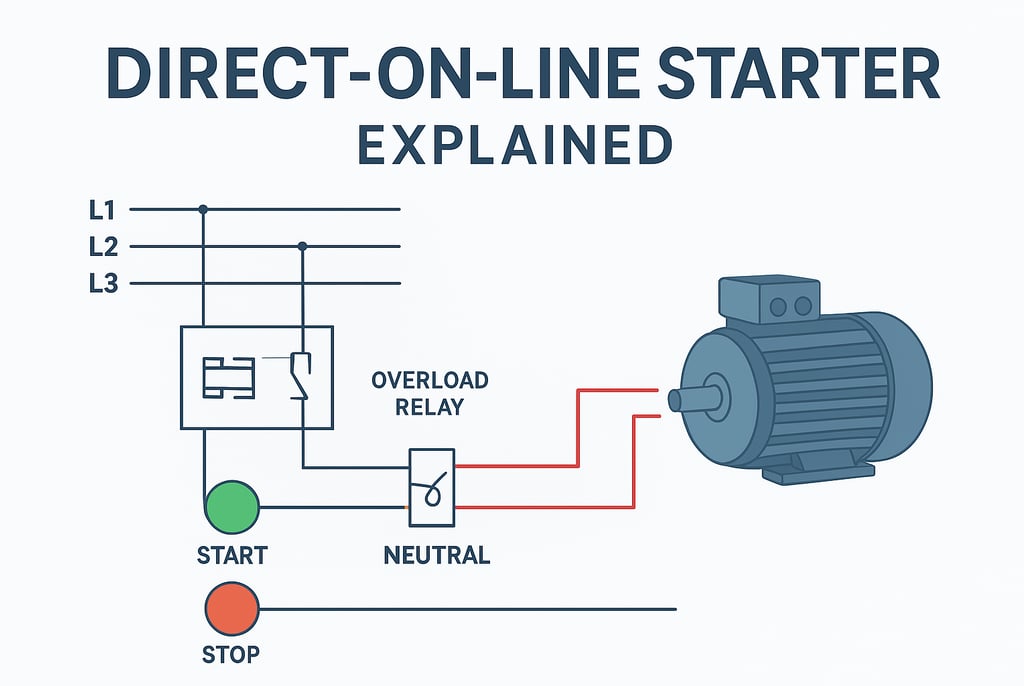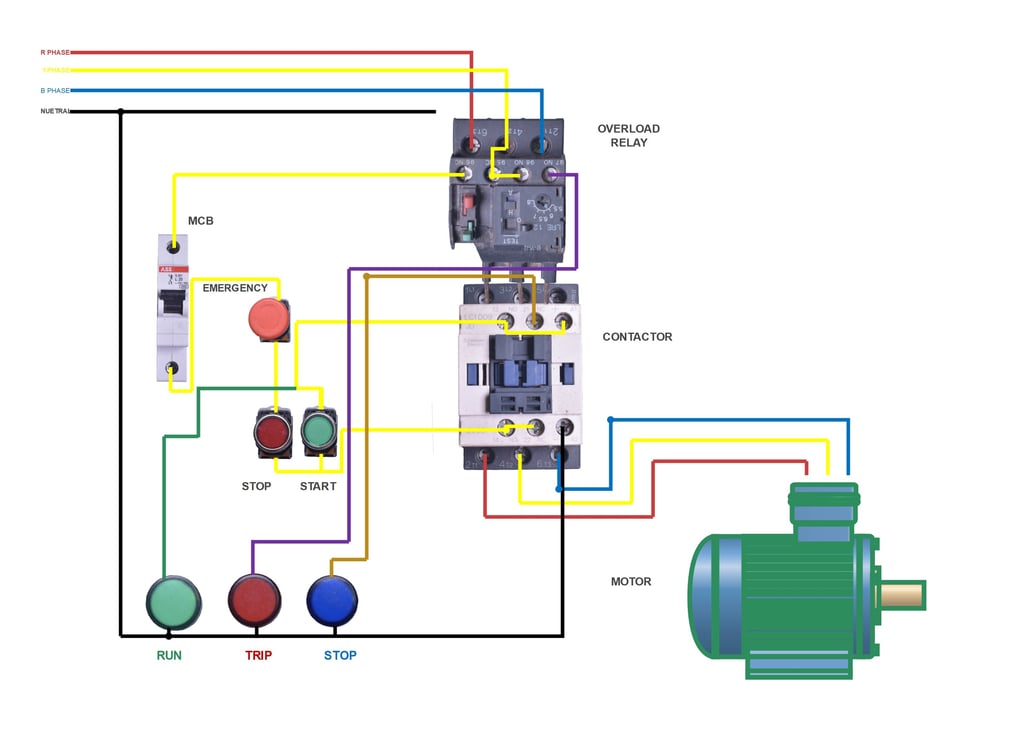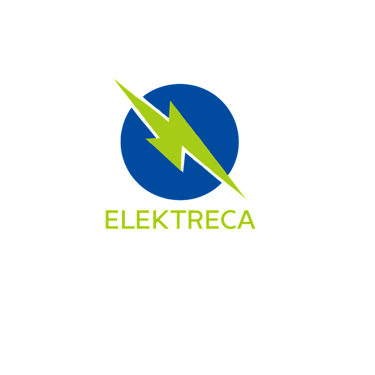Understanding Direct-On-Line (DOL) Starter: A Complete Guide
When it comes to starting and controlling electric motors, one of the simplest and most widely used methods is the Direct-On-Line (DOL) Starter. It is commonly applied in industries, workshops, and commercial setups to operate small to medium-sized three-phase induction motors.
MOTOR AND CONTROL
ELEKTRECA
8/21/2025


Understanding Direct-On-Line (DOL) Starter: A Complete Guide
When starting and controlling electric motors, one of the simplest and most widely used methods is the Direct-On-Line (DOL) Starter. It is commonly applied in industries, workshops, and commercial setups to operate small to medium-sized three-phase induction motors.
In this article, we will explain a DOL starter, how it works, its components, advantages, disadvantages, and applications.
What is a Direct-On-Line (DOL) Starter?
A DOL starter is the simplest type of motor starter that directly connects the motor terminals to the power supply. When switched ON, it allows the full line voltage to be applied across the motor windings.
This type of starter is mainly used for squirrel cage induction motors with ratings typically up to 7.5 kW (10 HP), although in some cases it can be used for motors up to 15 kW, depending on the supply system capacity.


Components of a DOL Starter
A DOL starter is made up of several key components that ensure both safe operation and motor protection.
An electrically operated switch that connects or disconnects the motor from the supply.
It is controlled by the start and stop push buttons.
Protects the motor against overcurrent caused by overload.
Trips the motor if the current exceeds the preset value for a certain period.
Start and Stop Push Buttons
Start Button (NO – Normally Open): Energizes the contactor coil to start the motor.
Stop Button (NC – Normally Closed): De-energises the coil and stops the motor.
Fuses or Circuit Breaker
Provide short-circuit protection.
Motor
The three-phase squirrel cage induction motor is being controlled.
Working Principle of a DOL Starter
The working of a DOL starter can be explained step by step:
Power OFF Condition:
The motor is disconnected from the supply. The stop button remains in a closed position, while the start button is open.
Starting the Motor:
When the start button is pressed, current flows through the stop button, start button, and overload relay coil to energise the contactor.
The contactor closes, connecting the motor directly to the power supply.
A holding contact (auxiliary contact) bypasses the start button, keeping the contactor energised even after releasing the start button.
Running Condition:
The motor continues to run as long as the supply is healthy and the overload relay does not trip.
Stopping the Motor:
Pressing the stop button breaks the circuit, de-energizing the contactor coil, and disconnecting the motor from the supply.
Overload Condition:
If the motor current exceeds the preset limit, the overload relay trips and breaks the circuit to protect the motor.
Advantages of DOL Starter
Simplicity: Easy to install, operate, and maintain.
Low Cost: Cheapest type of starter compared to other methods.
Reliable: Fewer components, hence less chance of failure.
Provides Protection: Protects against overloads and short circuits.
Disadvantages of DOL Starter
High Starting Current: Motor draws 6–8 times its rated current at startup, which may cause voltage dips in the supply.
Mechanical Stress: Sudden torque can put stress on the motor shaft and connected equipment.
Limited Application: Suitable only for small and medium motors; not ideal for large motors.
Applications of DOL Starter
Water pumps
Compressors
Small conveyors
Fans and blowers
Workshop machines (lathes, drilling machines, milling machines)
Agricultural motors
Conclusion
The Direct-On-Line starter is the simplest, cheapest, and most widely used starter for small and medium three-phase induction motors. Despite its drawback of high starting current, it remains a popular choice because of its simplicity, reliability, and cost-effectiveness. For larger motors, however, advanced starters such as star-delta or soft starters are preferred.

Insights
Connect
info@elektreca.com
+254786927909
© 2025. All rights reserved.
